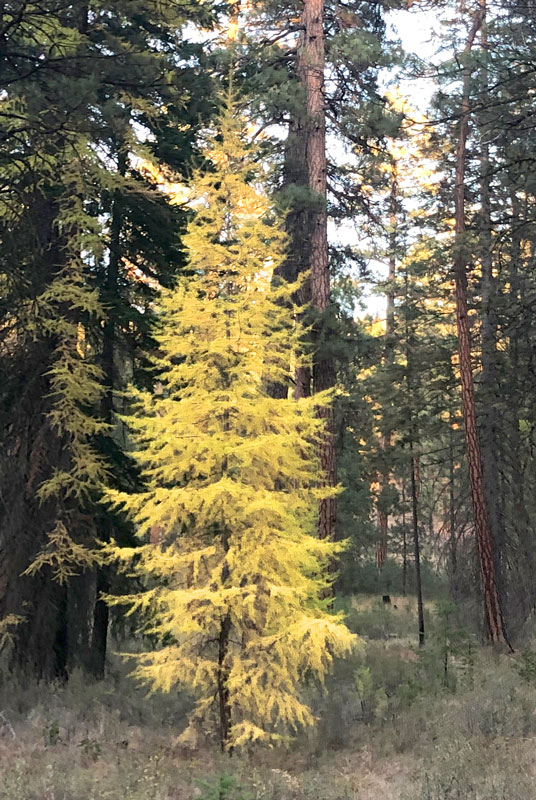
One of the world’s few deciduous conifers
The western larch is one of the only coniferous trees to lose all its needles every year after they turn yellow, usually a trait only found in broadleaf trees. It is actually classified as one of the world’s few deciduous conifers. The western larch is usually one of the first trees to return following a forest fire, because they thrive in the openings created by wildfires. This tree can live well over 500 years – with some found over 800 years old!
Range
Western larch is usually found growing with other coniferous trees including Douglas-fir, grand fir and ponderosa pine on moist, mountainous slopes near streams throughout British Columbia down through northern central and northeastern Oregon. It prefers to grow at an altitude of 2,000 to 7,000 feet.
Character
It can grow up to 180 feet tall and features a conical crown. It grows very straight and has sparse needles that grow on the short branches that extend parallel to the ground. Needles are feathery and flat.
Climate
Western larch prefers cool, moist sites and depends on frequent disturbance.
Understory
The understory of the western larch is typically diverse shrub and herbaceous layers.
Management
Because of its intolerance to shade, western larch is managed with even-aged techniques such as clearcutting, shelterwood and seed tree cuttings that encourage soil disturbance and improve chances for natural regeneration. Controlling competing species and creating mineral seedbeds with fire is essential to maintaining western larch in forest stands. Larch is harvested for high-quality lumber that is resistant to decay.
